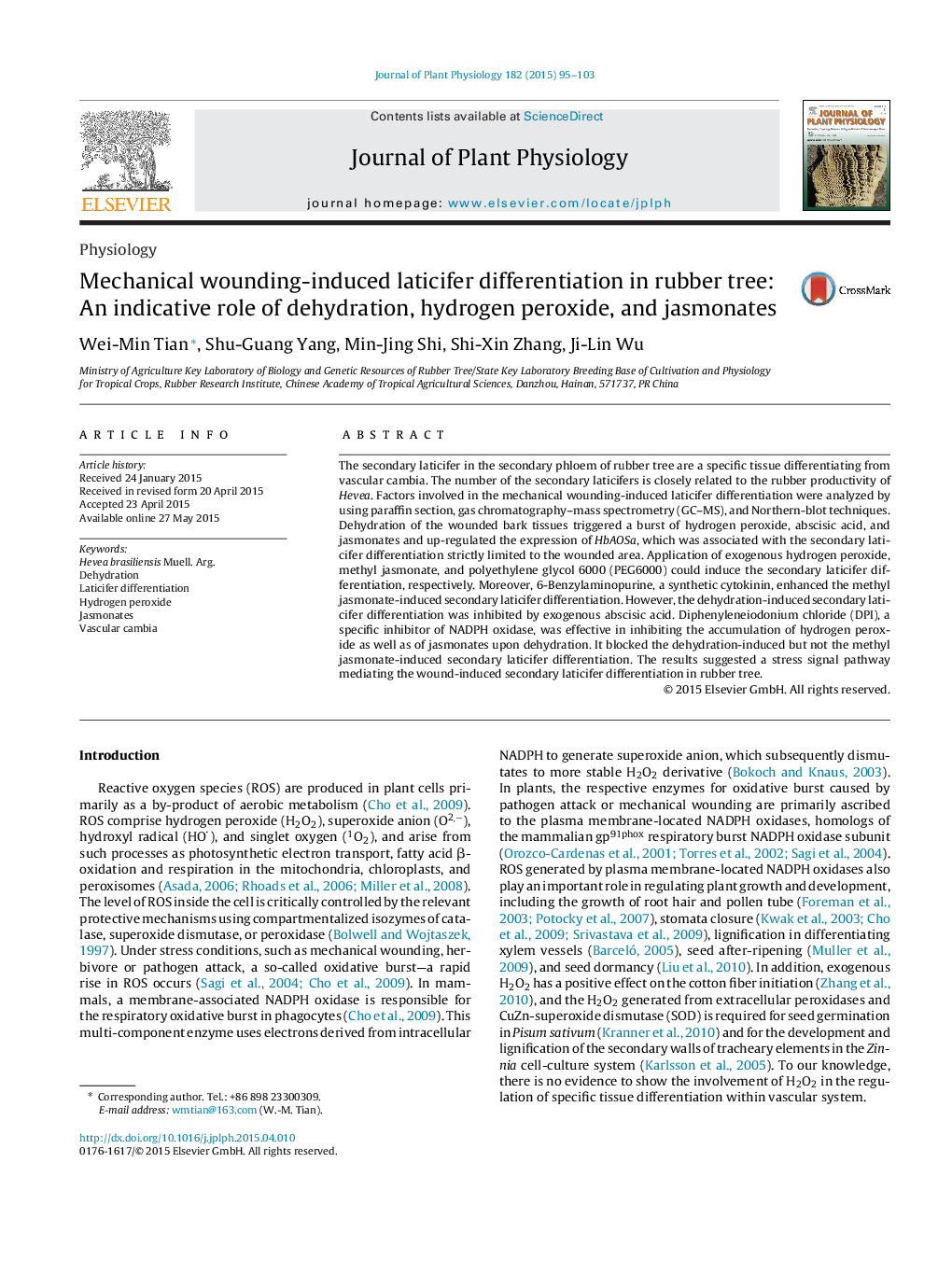| Article ID | Journal | Published Year | Pages | File Type |
|---|---|---|---|---|
| 2055589 | Journal of Plant Physiology | 2015 | 9 Pages |
The secondary laticifer in the secondary phloem of rubber tree are a specific tissue differentiating from vascular cambia. The number of the secondary laticifers is closely related to the rubber productivity of Hevea. Factors involved in the mechanical wounding-induced laticifer differentiation were analyzed by using paraffin section, gas chromatography–mass spectrometry (GC–MS), and Northern-blot techniques. Dehydration of the wounded bark tissues triggered a burst of hydrogen peroxide, abscisic acid, and jasmonates and up-regulated the expression of HbAOSa, which was associated with the secondary laticifer differentiation strictly limited to the wounded area. Application of exogenous hydrogen peroxide, methyl jasmonate, and polyethylene glycol 6000 (PEG6000) could induce the secondary laticifer differentiation, respectively. Moreover, 6-Benzylaminopurine, a synthetic cytokinin, enhanced the methyl jasmonate-induced secondary laticifer differentiation. However, the dehydration-induced secondary laticifer differentiation was inhibited by exogenous abscisic acid. Diphenyleneiodonium chloride (DPI), a specific inhibitor of NADPH oxidase, was effective in inhibiting the accumulation of hydrogen peroxide as well as of jasmonates upon dehydration. It blocked the dehydration-induced but not the methyl jasmonate-induced secondary laticifer differentiation. The results suggested a stress signal pathway mediating the wound-induced secondary laticifer differentiation in rubber tree.
